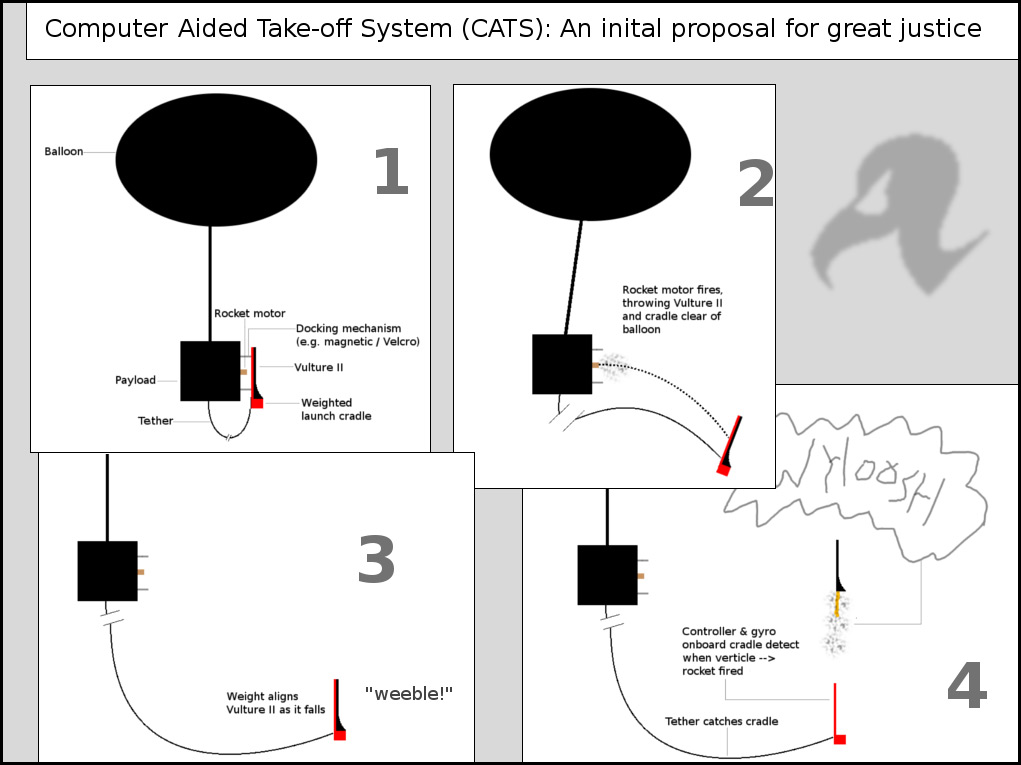This article is more than 1 year old
LOHAN team buried under ballockets
Click here for a shedload of Reg reader spaceplane launch concepts
Getting back to the underslung aircraft approach, R Edward Ito favours a curved launch rail idea:
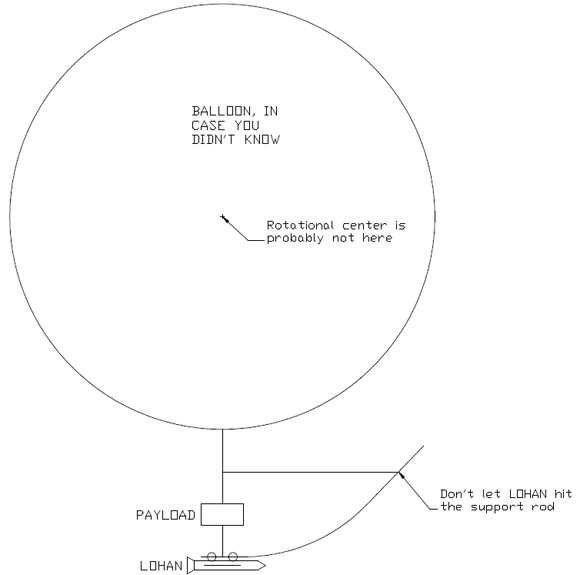
He says: "Once you have all the weights down it should be fairly easy to calculate the shape of a curved launch rail that would carry LOHAN aloft in a horizontal position and utilize the centripetal force generated by rocket against the curved rail to swing the rail to a vertical, or nearly so, angle of launch. The rail itself should be fairly simple. The problem will be calculating what is the optimal angle to built into the rail and what the radius of curvature should be. It would also be a good idea to calculate how big the errors can be and still get a good launch."
Shaun Esterhuizen came up with this launch rail alternative...
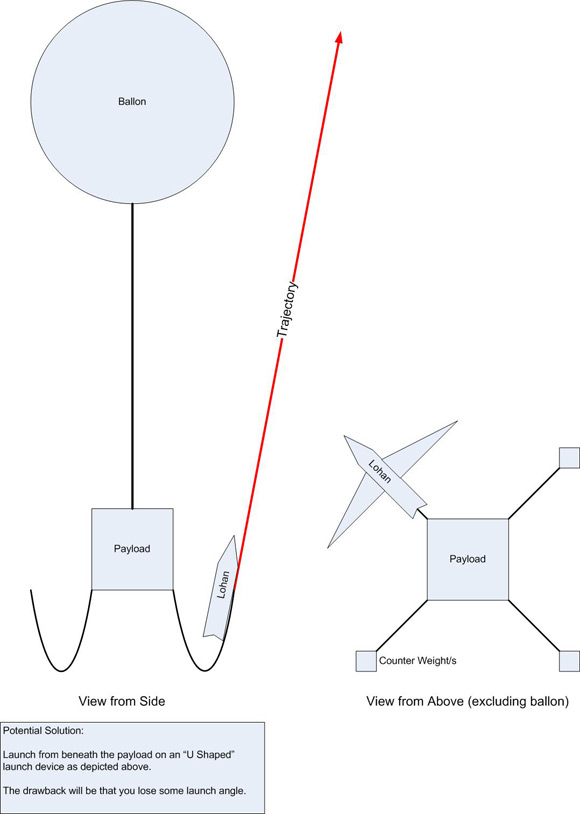
...while James Keir reckoned it's all about the angle of the dangle, as follows: "You dangle LOHAN beneath the payload and balloon on whatever length cord you want. At release altitude, you release the glider/rocket and its mini-counterweight, which is strung to hold the glider at the right angle. Wait for a short time so before firing the rocket and releasing the mini-counterweight. As it drops before the rocket fires, the angle of the wings should steer it clear(ish) of the balloon and payload. It should stay at more or less level bank because the drag on the wings would be equal."
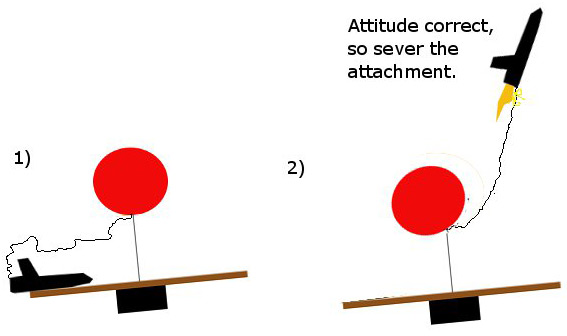
Barry brewed up a somewhat more complicated version of the same idea, and admits that while it's "a bit more convoluted than using a launch boom", it "should be possible to get an (almost) vertical launch".
He adds: "I thought a low power rocket motor would allow the space plane to get more clearance, but a slingshot would also work." (click on the pic for a bigger version...)
Surprisingly, Will Jones was the only person who included a gyro in his design. He lays out his stall thus: "As a way of reducing total weight – and increasing stability – how about using a gyro to stabilise the launch position? Initial idea is to use the deployment rotation of LOHAN to drive a mechanical gear which would spin up a gyro. I have not done any calculations to decide if this would work.. is there enough potential energy in Lohan to get the gyro up to speed enough to hold it in position for a launch?"
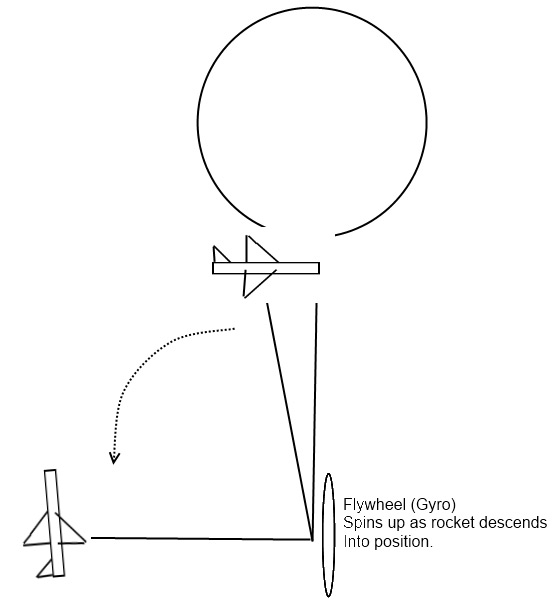
Will concludes: "However, you could also use a solar panel which would mean the gyro is running all the time (would help with stability during the ascent too). Another option is to spin up the gyro at ground level. Depending on how long the ascent takes.. it will still have enough inertia to hold the launch arm steady."
Menno Treffers couldn't be bothered with gyros. He wants more rockets: "If you attach a rocket the payload and fire horizontally, the payload will rotate upwards to the side of the balloon. That creates room to launch LOHAN."
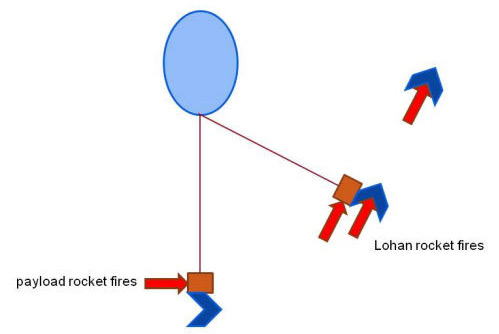
Dave Prendergast sent in no less than three ideas, all featuring rigid launch booms:
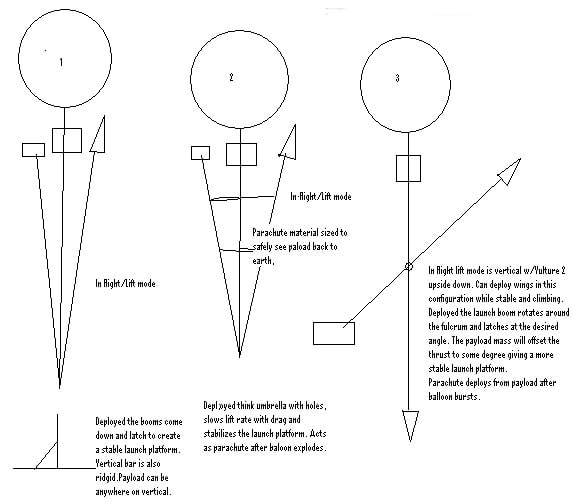
Here's the full explanation: "Option 1. Shows your launch boom but folded for balloon mode flight. It would deploy to horizontal mode for launch and latch to the rigid vertical boom. The payload box would be located on the vertical in the best location to minimise the pendulum effect. This design would achieve the greatest lift rate and minimise the 'sail effect' that the counterweight and rocket would create on the way up with wind forces acting on them. Once at deployment altitude, wind will be less of an issue.
"Option 2. Shows the launch boom folded for balloon mode flight but the four booms are joined by parachute material of a sufficient area to allow the safe descent of the payload after balloon burst. The length of parachute material between the booms will determine the angle of rocket deployment. This 'umbrella' arrangement will replace the weight of the parachute for safe return of the payload. The drag will slow the ascent and stabilise the launch platform, potentially reducing the amount of counterweight required.
"Option 3. Shows the asymmetrical launch boom in a vertical position for balloon mode flight. Vulture 2's wings could be deployed in this stable lifting mode once at altitude. At release time, the payload releases from the vertical boom and rotates around the fulcrum/pivot, raising the rocket into launch position. The extra length of the rocket side boom helping to clear the balloon more easily. Rotation is stopped with a simple pin; rocket thrust is offset to a degree by the payload mass. This design saves the weight of the counterweight allowing for higher payload capacity."
